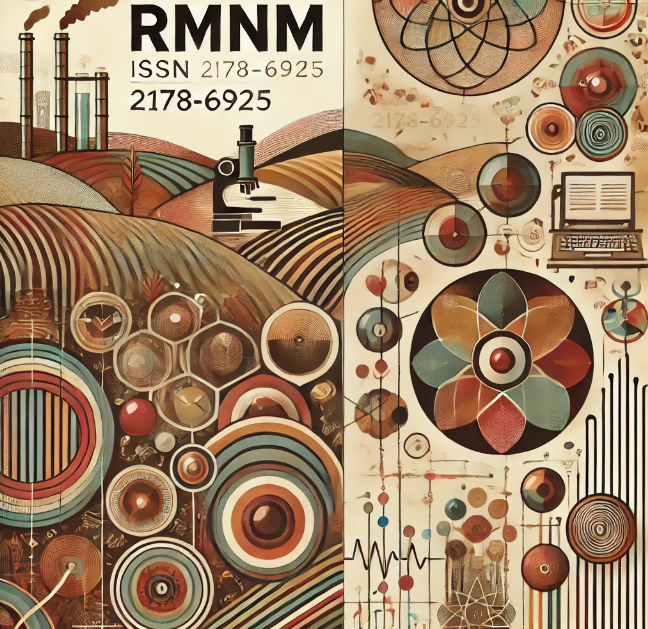APPLICATION OF LEED ENVIRONMENTAL CERTIFICATION CRITERIA IN A POPULAR MARKET HOUSING
DOI:
https://doi.org/10.61164/rmnm.v5i1.2478Keywords:
arquitetura sustentável, habitação popular, sustentabilidade socialAbstract
Since the intensification of the climate changes on a global scale, the architecture can contribute to the downsize of the environmental impacts from more sustainable constructions. In that regard, this article intends to study the application of the environmental certification Leadership in Energy and Environmental Design (LEED) - which consists in a certification aimed at sustainable constructions, designed and granted by a North American organization - standards in a Popular Market Housing project, elaborated by the author herself, in the city of Belém in Pará. In methodological terms, this was a bibliographic research, in which were considered books, book chapters, sites of governmental organs and qualified scientific papers. Throughout the development of the project, many techniques based on the sustainability of the constructions were considered, the main one being Low Impact Development. From the perspective of project evaluation, the list offered by the LEED certification was used, besides two softwares, the Flow Design and the Velux Daylight. The first one evaluates the airing by simulating a virtual wind tunnel to visualize the air flow inside and around the building. The second one, was used to certify the performance regarding access to natural lighting. Moreover, through the standard checklist, it is considered that the design proposal is capable of attending the mandatory and non mandatory requirements and to achieve 63 points, including the requirement of producing renewable energy and optimizing the energy consumption of the home. Therefore, such strategies, yet barely used in Brazil, can bring benefits both environmentally, aiming to reduce the use of natural resources and generation of pollutants, as possible financial savings and improve quality of life to the user population of the sustainable architecture.
References
BONDUKI, Nabil. Origens da habitação social no Brasil. Arquitetura moderna, lei do inquilinato e difusão da casa própria. 4ª edição, São Paulo, Estação Liberdade, 2004.
BRASIL. Estatuto da Cidade. 3. ed. Brasília: Senado Federal, Subsecretaria de Edições Técnicas, 2008. 102 p.
BRASIL. Caracterização e tipologia de assentamentos precários: estudos de caso brasileiros. editores: Maria da Piedade Morais, Cleandro Krause, Vicente Correia Lima Neto. Brasília: Ipea, 2016, 540 p.
BUENO, Cristiane et al. Análise da aplicação da certificação ambiental de edificações habitacionais leed for homes no contexto brasileiro. USP, São Paulo, 2011.
CARDOSO, Adauto et al. Habitação De Interesse Social: Política ou Mercado? Reflexos Sobre A Construção do Espaço Metropolitano. In: ENANPUR, 14., 2011, Rio de Janeiro. Disponível em: https://anais.anpur.org.br/index.php/anaisenanpur/article/view/683/669. Acesso em: 23 abr. 2024.
CARVALHO, Raquel Saravy de. Potencial Econômico Do Aproveitamento De Águas Pluviais: Análise Da Implantação De Um Sistema Para A Região Urbana De Londrina. UFPR, Apucarana, 2010.
ELETROBRAS (2019) Pesquisas de Posse e Hábitos de Consumo de Energia (PPHs) 2019. Procel Disponível em < https://eletrobras.com/pt/Paginas/PPH-2019.aspx> Acesso em março de 2022.
FUNDAÇÃO JOÃO PINHEIRO, Déficit Habitacional e Inadequação de Moradias no Brasil. 2016-2019,Belo Horizonte .Disponível em: https://drive.google.com/file/d/1MgenDRYIfH10aYirjRYIKwJGHwIxulGq/view
GUIMARÃES, Dalisson. Viabilidade econômica para implantação de sistema de aproveitamento de água pluvial em residência unifamiliar. Universidade Federal de Uberlândia, Minas Gerais, 2018.
LARANJA, Andréa; SILVA, Anna. Uso de prateleiras de luz para melhoria do desempenho luminoso em ambiente escolar em Vitória, Espírito Santo. Revista sítio novo, tocantis, v. 6, p. 58-68, mar 2022.
HOOD, Ernie. Dwelling Disparities: How Poor Housing Leads to Poor Health. Environmental Health Perspectives, EUA, v. 113, ed. 5, 2005. Disponível em: https://www.ncbi.nlm.nih.gov/pmc/articles/PMC1257572/. Acesso em: 14 dez. 2022.
KATS, Gregory et al. TORNANDO nosso AMBIENTE CONSTRUÍDO MAIS SUSTENTÁVEL: custos, benefícios e estratégias. Estados Unidos: Island Press, 2010.
NBR 15220-3 (2005). DESEMPENHO TÉRMICO DE EDIFICAÇÕES. 30p.
NBR 12721 (2006). Avaliação de custos de construção para incorporação imobiliária e outras disposições para condomínios edilícios.
PALMA, Rodrigo. Habitação social e urbanismo sustentável: oferta de mobilidade urbana e a localização do programa minha casa minha vida na cidade do rio de janeiro. Orientador: Pablo Cesar Benett. 2016. Dissertação de Mestrado (Arquitetura e urbanismo) - Ufrj, [S. l.], 2016.
RAEDER, F. Grottera, C.Rodrigues, N.; Melo, Y. (2022). Mais peso no bolso: os efeitos da inflação dos energéticos no orçamento familiar das diferentes classes de renda. Ensaio Energético, 20 de junho, 2022.
REIS, A. T. DA L.; LAY, M. C. D. O projeto da habitação de interesse social e a sustentabilidade social. Ambiente Construído, v. 10, n. 3, p. 99–119, jul. 2010.
SIQUEIRA, Maria da Penha Smarzaro. Metropolização, pobreza e exclusão social. Revista Ágora, Vitória, n. 7, 2008, p. 1-12.
TASSI, R.; TASSINARI, L. C. da S.; PICCILLI, D. G. A.; PERSCH, C. G. Telhado verde: uma alternativa sustentável para a gestão das águas pluviais. Ambiente Construído, Porto Alegre, v. 14, n. 1, p. 139-154, jan./mar. 2014.
TOMAZ, Plínio. Aproveitamento de água de chuva em áreas urbanas para fins não potáveis. [S. l.: s. n.], 2009.
Downloads
Published
How to Cite
Issue
Section
License
Copyright (c) 2024 Revista Multidisciplinar do Nordeste Mineiro

This work is licensed under a Creative Commons Attribution-NonCommercial-ShareAlike 4.0 International License.




